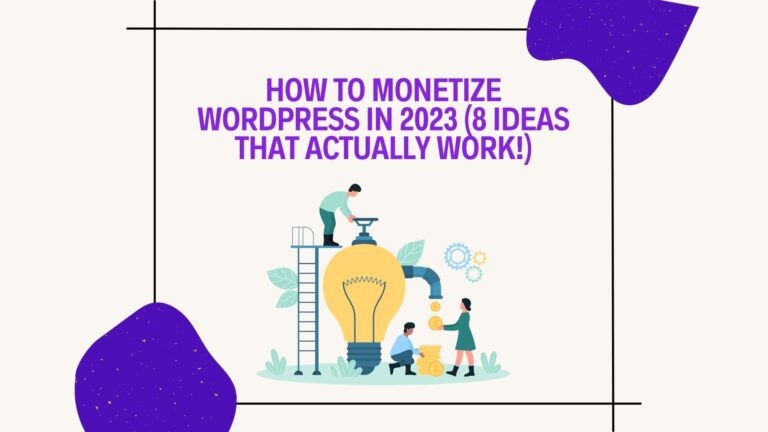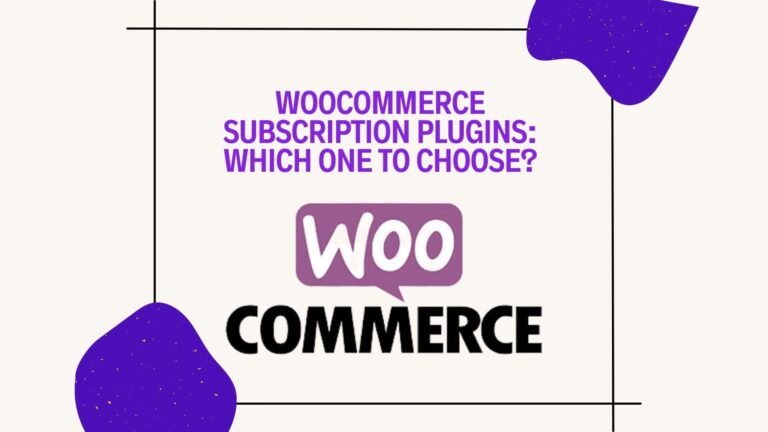You may have noticed that more and more businesses today are turning to paywalled content – and it’s no wonder! Creating high-quality digital content is time-consuming and expensive. Setting up a paywall helps websites generate revenue and survive in the digital world. The problem with this? There are so many ways to access free content online that it’s not easy to get visitors to pay for your content.
What is a Paywall?
Fortunately, today it’s easier than ever to build a loyal and exclusive online community. In this post, you’ll learn why you should consider creating content and then publishing it behind a paywall! Spoiler: It’s because a paywall can help you create a more loyal community that wants your content so much that they actually pay for it! But let’s take it step by step and cover everything, from paywall content tips to WordPress membership plugins…

First Things First: Why Use Paywalls at All?
In the early days of the Internet many companies provided their content online for free, which led to a decline in print media sales. This increased pressure on their financial models and their reliance on digital advertising (now dominated by giants like Google, Apple, and Facebook). As a result, they have begun experimenting with content payment models in recent years to supplement advertising revenue.
The emergence of subscription models, paywalls and, in some cases, donations, as well as the rise of “gated content” has been unstoppable since companies realized the benefits of a paywall. The Wall Street Journal has more than 2.9 million subscribers who pay for its content, and The New York Times recently hit the 10 million subscriber mark. How incredible is that?
What About Your Business?
As a content creator or business owner, you have probably explored many ways to monetize your content. Perhaps you have already tried selling products, offering services, advertising on your website, or affiliate marketing. While these are all great options, adding paywalls to your website can be much easier (if you’re curious, we know a great membership plugin for WordPress!) and, yes – people will pay for it.
The psychology behind this is actually quite simple: If I have to pay for it, it must be good! People tend to trust information they have paid for more, and view free online resources as simplistic at best, illegitimate at worst. If you can establish yourself as a reputable source, which you may already have done, then your valuable content may well help attract and retain paying customers.
The Membership Site: An Effective Way To Offer Paid Content
A membership site is a subscription site with protected content that members can sign up for or pay for. It is usually educational, and new content is expected to be posted regularly. Building a community of subscribers can help create a more sustainable revenue stream, as you can set up recurring subscriptions for your readers instead of constantly spending your hard-earned money on more advertising.
Regardless of your niche, you can use this fantastic model to attract readers and ensure that the most engaged pay for continued consumption. They already know that your site can provide them with helpful, informative content – now it’s up to them to decide if they want to know more or just read the free content. (But don’t worry about it! The human mind is a curious animal, and all too often it craves something more…)
What Type of Content Should You Offer?
Not sure what kind of content to offer your members? Not a problem! There are many different types of content that fall under the “content marketing” umbrella, so you have plenty of options to choose from – and choose you shall, because these days it’s important for any serious business to share valuable content with an engaged audience.
With content marketing, you can engage your target audience directly, increase awareness of your business or brand, and attract even more customers. Understanding the benefits of different content formats will help you choose the right media for your business and develop a long-term content marketing strategy (which should ideally include a mix of written and visual content).
What Can You Put Under a Paywall?
Once you have started creating content, the next thing you should do is put some of it under a paywall. But which one? Well, the good news is that the format does not matter! Whether it’s an e-book, an online course, an email newsletter, a cheeky behind-the-scenes video, or a valuable webinar, it can easily be put behind the paywall.
As a rule of thumb, anything that ends up behind a paywall has to be worth paying for and have a certain quality that puts it above anything else you offer for free. There is a general perception that sites with content behind a paywall tend to be of higher quality than those without one. This is why a paywall won’t scare your visitors; it’ll show them that what you offer has more value than other free sites!
Creating high-quality, unique content takes time, money, and energy, and a paywall is a great way to get the recognition you deserve for it.
How to Create Great Paywall Content
Now that you know why setting up paywalls for your content can be profitable, let’s discuss the how.
Ask Your Audience
You need to engage with your audience to find out what they love, what they value, what they need to learn, and how much they’re willing to pay for it. If you already have an audience, ask them if there’s anything specific they’d like to learn more about in the future, and take notes on everything they say. That’s what your paid content should be about!
No matter what stage you’re in, remember to read between the lines: People won’t always tell you what they want, because sometimes they don’t even know. To implement an effective paywall strategy, you may need to figure some of this out for yourself, and even learn how to understand your online audience using your web analytics tools.
Price It Right
It’s no surprise that people generally prefer free content. However, they also want to be sure they’re getting a good deal. If your membership offers valuable content at a reasonable price, this may be more useful than spending time searching for free resources. But first, try to learn about common pricing models for other membership sites in order to understand average pricing and avoid overcharging.
Then, consider offering multiple pricing tiers that give visitors more options. The idea behind this is to give customers choices instead of forcing them into an “all-or-nothing” scenario. You could even add a limited free offer into the mix! Your users can start with a free or lower rate and then move to another pricing tier if they like your content. Be sure to always point users to your premium features without being too pushy – but, yes, they do need the reminder!
Create Community Vibes
You can add tremendous value to your paywall content by building a vibrant member community. This can make outsiders feel like they are missing out on the benefits of an exclusive group where paying users can connect with each other in a meaningful way and get value from their peers. You could also set up a referral program to reward loyal members for recommending your services to friends.
If you’re working with WordPress, you can use a WordPress plugin for membership that allows you to create a welcoming community where users can interact through member profiles, messages, groups and more! And, remember, to make your online members feel part of a community you can always host fun online meetings and group events, and occasionally send them free branded merchandise. With or without a paywall, we all love freebies!
Takeaway
Remember, once you’ve built an engaged audience, you’ll make far more money from your membership content than from advertising. Putting up a paywall is the right move for your best content, so why not give it a go? Our all-in-one WordPress membership plugin has endless membership features to manage old and new subscriptions and start monetizing your site right away!
Read More:
How to Create a Membership Site Your Members Will Love
The Best Membership Level Names You Can Use




